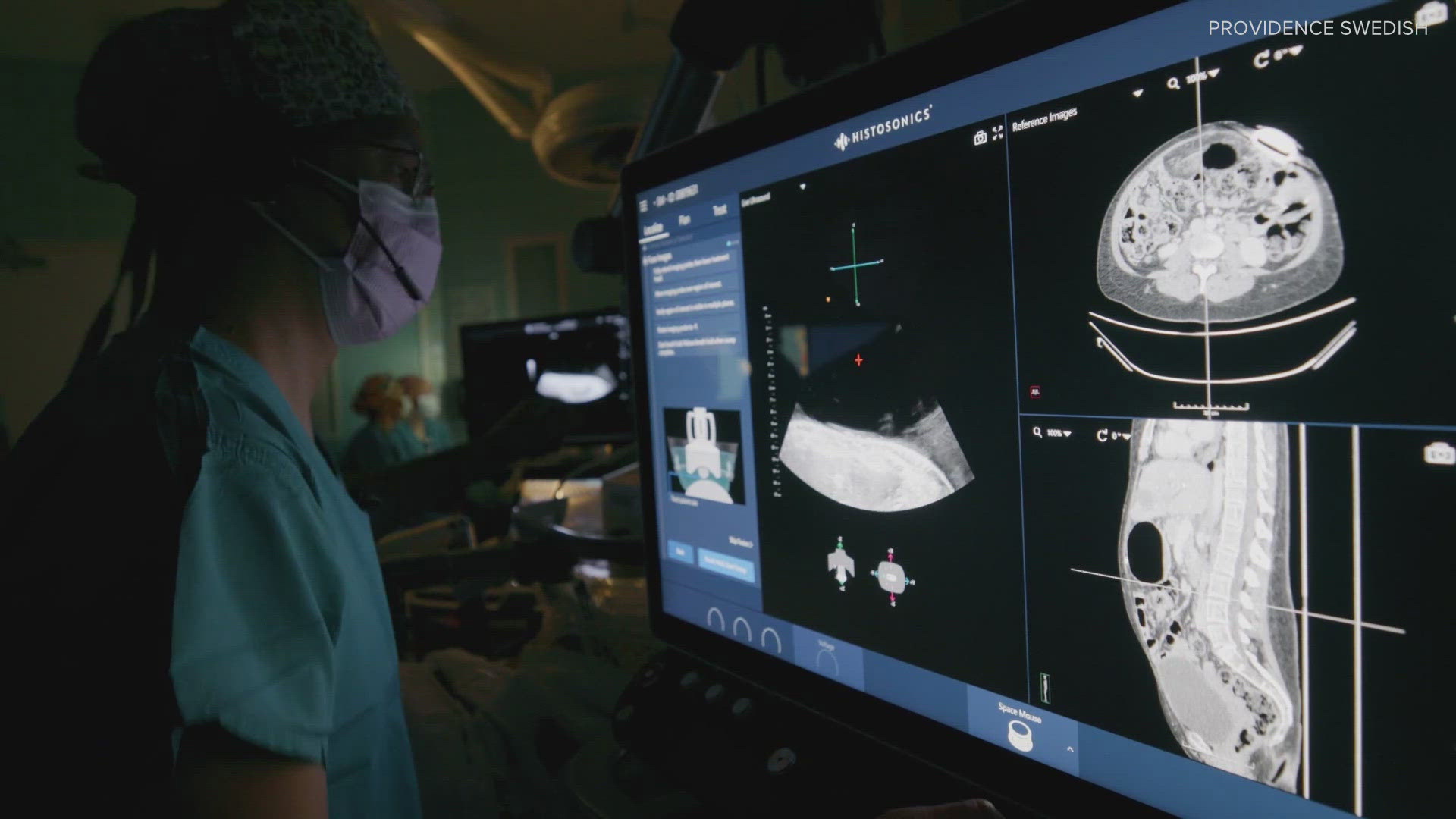SEATTLE — What if a tumor can be removed without having to go under the knife? It's possible, thanks to a device that Seattle doctors said, "liquefies" cancer growth in the liver.
Providence Swedish is the first hospital group on the West Coast to offer this treatment and it's giving one patient who's undergone it, some new hope.
"I actually had some pain in my chest that I thought was maybe heartburn or something. Didn't think it was anything serious," said Sara Marthoski.
Marthoski is a a 49-year-old Medford, Oregon mom of three and a grandma to a baby boy. She went to the ER to get her symptoms checked out and learned from the doctors it was something very serious.
"She said, 'Well, you have tumors all over your lungs and your liver. And we don't know where they're coming from,'" Marthoski said.
Follow-up check-ups showed she had colon cancer that had spread to other organs. Doctors removed the tumor from her colon. Marthoski then started chemotherapy to attack the cancer in her lungs and liver.
"It didn't sound like a very long life so I tried to see if there was something more I could do. So that's when I explored other options," she said.
She specifically looked into treatments for her liver cancer and came across clinical trials for histotripsy. Histotripsy is a noninvasive procedure offered at Providence Swedish First Hill in Seattle, designed to target liver cancer.
Marthoski's physician, Dr. Evan Ong, a surgical oncologist at Swedish, performed histotripsy for Marthoski.
Ong's focus is on upper GI cancers but he also treats patients with metastatic cancers. He said histotripsy is currently FDA-approved to target liver cancers.
"It's ultrasound-driven right now, in the sense that you visualize the space that you want to treat by ultrasound," Ong said.
Sonic pulses create a so-called "bubble cloud" that targets specific areas to, in essence, "liquefy" tumors.
"By controlling the bubble cloud in a specific area, you can actually utilize that to map out and treat areas that you want to destroy," Ong said.
Marthoski was an ideal candidate because she still had to be on chemotherapy.
"If you're on chemotherapy and you do surgery, sometimes we do it in an emergency; it's a known risk factor that you can have increased infections and complications during the surgery," Ong said.
"Histotripsy is different because it's noninvasive," Ong added. "You really don't have to stop chemotherapy."
Marthoski traveled to Seattle to get the procedure in March this year.
"I wouldn't have known anything was done. So I felt good the whole time, which was amazing," Marthoski said.
Marthoski and her medical team are now awaiting scan results and they're staying hopeful.
"She has a fairly good prognosis in spite of the fact that she has metastatic disease that's changed over the last decade," Ong said.
Marthoski said she's glad she found another treatment option for her liver and urges other patients to keep researching and not give up.
"I've never asked for a timeline of what I have, because I don't believe in that. It's all on god's will so it will be what it will be, so we're marching forward in trying to find something to get rid of this," Marthoski said.
Patients who would like to learn more about the noninvasive procedure can find more information here.

